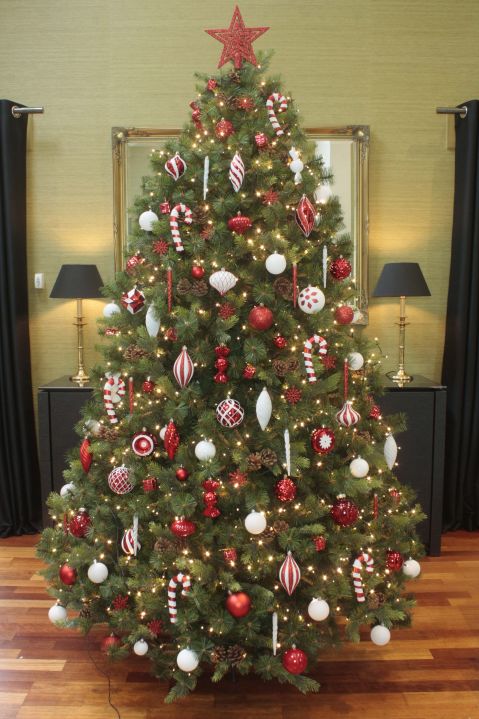Evergreen Trees: Why We Decorate and Celebrate

Evergreen trees have long been synonymous with holiday celebrations across various cultures, each adding their unique traditions and significance. Why do these lush, green symbols resonate so deeply during the winter months? In this blog, we'll explore the history, symbolism, and cultural significance behind the decoration and celebration with evergreen trees, providing insight into why this practice has persisted and evolved through time.
The Origins of Evergreen Tree Traditions


Historically, evergreen trees have been revered since time immemorial. Ancient civilizations from the Egyptians to the Romans and Nordic tribes celebrated the Winter Solstice, the shortest day of the year, with rituals that often included evergreens:
- Egyptians used palm rushes in their solstice celebrations, symbolizing the triumph of life over death.
- Romans decorated their homes with evergreens during Saturnalia, honoring the god of agriculture, Saturn.
- Nordic and Celtic tribes brought evergreen trees inside as symbols of eternal life, believing that spirits lived within.
🎄 Note: While these ancient practices are part of pagan rituals, they show how evergreen trees have been a constant in human festivity across different eras.
Christian Symbolism and the Christmas Tree

The transition to the more contemporary Christmas Tree tradition is often attributed to 16th century Germany, but it was the Christian symbolism that made this practice mainstream:
- The evergreen nature of the tree symbolizes eternal life, a core Christian belief.
- The three points of the tree often represent the Holy Trinity.
- Ornaments like stars or angels at the top symbolize heaven or the birth of Jesus.

The transformation of evergreen trees into Christmas trees was further popularized by the British Royal Family in the 19th century, making it a global tradition.
Modern Interpretations and Decorations

While the historical and religious significance of evergreen trees remains potent, modern celebrations incorporate a broad range of customs and decorations:
- Lights: Symbolic of guiding lights or stars, with energy-efficient LEDs now being popular choices for environmental sustainability.
- Ornaments: From simple baubles to intricate heirlooms, reflecting personal or family history.
- Custom Decorations: Handmade ornaments, eco-friendly or sustainable decorations, and themes reflecting current trends.
🌍 Note: Modern decorations not only celebrate the holiday spirit but also emphasize eco-friendly and sustainability practices, aligning with contemporary values.
Cultural Variations of Evergreen Tree Celebrations

Evergreen tree traditions aren't limited to one culture or country; they span a rich tapestry of global customs:
| Country/Culture | Customs |
|---|---|
| Italy | La Befana, an old woman who delivers gifts, might be portrayed delivering presents around a tree. |
| Japan | Incorporates Christmas trees into their culture despite the small percentage of Christians; often used in commercial settings. |
| Mexico | Christmas trees are adorned with regional decorations like flowers, particularly poinsettias. |

These cultural variations highlight how evergreen trees, while rooted in ancient practices, have become versatile symbols of celebration across the world.
Why Evergreen Trees Are Chosen

So, why exactly are evergreen trees the centerpiece of these celebrations?
- Symbolism: The evergreen nature symbolizes hope, life, and renewal. Their resistance to winter conditions reflects resilience.
- Aesthetic Appeal: Their verdant color and robust form make for beautiful decorations, standing out against the often gray or white winter landscapes.
- Practicality: Evergreen trees last longer than deciduous ones, offering a constant reminder of celebration during the entire holiday season.

🔍 Note: The choice of evergreen trees goes beyond mere aesthetics; it's deeply intertwined with human emotion, culture, and nature itself.
To recap, the tradition of decorating evergreen trees during winter celebrations has roots in ancient pagan rituals, Christian symbolism, and has grown to encompass a wide range of cultural practices. The evergreen tree has evolved to symbolize life, hope, and celebration, resonating with people across time and geography. Its enduring presence in our homes during the coldest months offers not just visual warmth but also a timeless reminder of life's cycles, resilience, and the spirit of festivity.
Why are evergreen trees decorated during Christmas?

+
Evergreen trees symbolize eternal life and the triumph of life over death, key themes in Christmas celebrations. Their use in holiday decorations stretches back to ancient pagan rituals, integrated into Christian symbolism over time.
How has the Christmas tree tradition evolved?

+
The Christmas tree tradition began in 16th century Germany but was popularized globally in the 19th century by Queen Victoria and Prince Albert. Today, decorations reflect personal and cultural identities, including eco-friendly and themed ornaments.
What do the various elements of a Christmas tree symbolize?

+
The evergreen tree itself symbolizes eternal life or hope. Lights symbolize Christ or stars, guiding lights, and the candles or lights represent God’s presence. Ornaments often carry personal significance or cultural symbols, while the star or angel on top signifies the Star of Bethlehem or divine guidance.